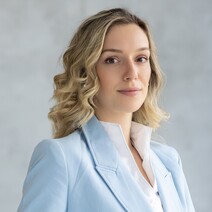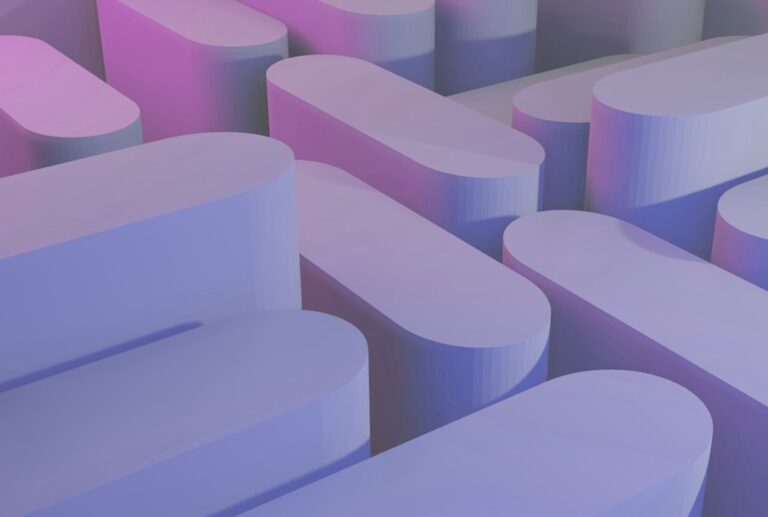The trend of continuous growth of the importance of software in modern society is followed by a growing interest in its legal protection. The adequate regulation of rights and obligations regarding the software ownership, copying, decompilation, potential protection of software by a patent, sanctioning the illegal use of software, etc., represent a relevant matter for any society nourishing the development of (the IT) industry.
Unlike the widely accepted copyright protection of software (both in Serbia and in the world) the question of whether the software can be patented has been the subject of controversy at the global level for quite some time. The answer to this question is of great practical significance given that copyright and patent are two very different intellectual property rights. In addition to providing different authorizations to their holder, copyright and patent are obtained in different ways, they differ in terms of duration, may have different commercial effects on the business, etc.
As for software, its specific nature is reflected in the fact that it can (and should) be additionally protected by various intellectual property rights and legal institutes, which provide the protection indirectly. That is the main reason to, when speaking of the legal protection of software, consider the following rights:
- Copyright
- Patent
- Trade secret
- Trademark
Copyright Protection of Computer Software
According to the Law on Copyright and Related Rights, in order for a certain creation to obtain copyright protection, it has to be an original work of authorship of the author, expressed in a certain form. Only such concrete form which expresses the originality is protected by copyright. That is the reason why it is often said that the copyright protects the form, not the essence.
If we take a novel as an example, that means that the copyright protects the sentences contained in a novel from unauthorized copying, but not the ideas behind the novel itself. The novel is a great example in this case, given that the software is protected as a literary (written) work, in accordance with the Law and relevant international legal sources [1].
Thus, a source code can be described as a written text. Additionally, not only source code but object code also represents the form of expression, which makes them suitable for copyright protection, as such form is the object of the protection.
We can illustrate that in a popular case law example. The globally famous crime novel by Dan Brown, “The Da Vinci Code”, has been an object of innumerable accusations of being plagiarism.
Namely, the authors of “The Holy Blood and the Holy Grail” have accused Dan Brown of copying their work of authorship, more precisely that he “replicated their method of connecting the facts and bringing the conclusion of the Jesus Christ’s bloodline existence”.
However, the biggest obstacle for these authors in the court procedure was the fact that Dan Brown did not copy the text itself from the “The Holy Blood and the Holy Grail”. Having that in mind, the authors claimed that there was “non-literal copying of an essential part of their book”. The court did not accept these arguments; instead, it has taken the stand that there was no replicating of a text from the book of these authors, “but deriving of some ideas (for example, the idea that the Holy Grail is not a cup, but a metaphor for Jesus’ bloodline) , which are not protected by copyright. The lawsuit is declined.”
Therefore, by this case law, it is once again confirmed that the essential purpose of copyright is – the expression of the author’s thoughts and ideas, but not an idea itself, ie, its content.
The case of “The Da Vinci Code” can be reflected in the matter of software as well. For example, if someone creates software for the sales of sports equipment which has identical functionalities as an already existing software in the market unless the form is copied, but just the idea – the copyright infringement does not exist. As a potential solution to overcoming this limitation of copyright protection, it is interesting to consider the issue of patenting the software, bearing in mind that the only way of protecting the idea is – by a patent.
Software Patent Protection?
Whether the software can be protected by the patent is a complex question. First of all, what needs to be said is that software ‘as such’ cannot be protected by patent in the EU and the majority of other legal systems (with the USA as an exception). The Serbian Law on Patents even contains an explicit provision highlighting that fact (that computer programs, in accordance with the law, are not considered inventions).
Why is that? Well, every computer program is a mathematical algorithm. The Law on Patents prescribes that mathematical methods are not inventions, and accordingly, cannot be protected as a patent. On the contrary, no one else could use such mathematical formulas within the period of patent duration (20 years from the date of submitting the patent application).
However, the software may produce some kind of technical effect that is industrially applicable. When protected by the patent, it is not the software itself being protected, but in most cases the device controlled by the software. Therefore, the software is a part of a system, controls that system, and enables the device to be functional in a new, different, innovative way. It is not enough to establish a simple relationship between the software and hardware – there has to be a specific technical effect as a result of a software presence.
In relation to the above-mentioned, it is not enough for the software to solely automate the existing solutions. What is necessary is the existence of a new effect, not a simple automation. Essentially, the patent protects the software indirectly, through the system which has that software as its integral part.
Those are the so-called software-implemented inventions, which:
- Are patentable if they belong to the technical science area,
- Contain 3 criteria of patentability: novelty, inventive step, and industrial application.
- Such inventions are treated like all the other inventions, but with a strong focus on the ability to be integrated into the technical science area and have a technical essence. [2]
Due to this complexity, protection of the software as a patent is considered almost impossible, and thus, copyright protection is being commonly accepted as ‘crystal clear’. When added the fact that the registration of a patent includes a complicated procedure of composing the patent application and paying the fees, it is understandable why the software authors mostly settle for copyright protection – which does not require any kind of registration or cause any expenses.
Furthermore, when speaking about the patent application for software, advanced writing skill is needed given that the patent application must not show the intention of protecting the software ‘as is’. These applications can be truly intricate, especially when they include defining several requests (for the system, the method, the software, the signal, etc.).
A few examples from practice [3] :
- Travel and ID documents reader,
- Procedure for the certification of electronic mail including the reliable digital signature being performed by the telecommunication operator,
- Procedure and method of coding application on small data carriers,
- Systems and procedures for securing the multi-factor authentication based on the transaction chain,
- System and procedure for the use of security programs for digital marketing.
The exception to the listed rules exists in a few legal systems in the world, out of which is the most important patent law system – the US legal system, because of its commercial significance. However, given that this topic calls for an entire separate text, this blog post, we will just briefly state that the USA legal system had different periods in its evolution which were more or less open to the patenting of software ‘as is’. In any case, today it is possible to de facto patent the software ‘as is’ in the USA, with, of course, multiple other preconditions which previously needed to be fulfilled.
Therefore, whereas the copyright protection of software exists from the moment of creating software in a certain form (source, object code, etc.) which represents the work of authorship, software ‘as is’ is not patentable in Serbia.
However, these are not the only differences between patent and copyright protection. The differences in obtaining the right, duration, territorial scope, etc. have reflected the struggle for the dual-protection treatment of software, which does not abate but with the development of the industry, it is becoming an issue that is attracting even more attention.
How and When Do the Copyright and Patent Arise?
| COPYRIGHT | PATENT | |
| WHEN DOES THE RIGHT ARISE? | from the moment of the creation of the work of authorship (software) – no additional actions, for example, the registration before the competent authority, is needed; | by publishing the notice on the granted right in the official gazette issued by the Intellectual Property Office (hereinafter: Office), and it arises from the date of the application submission – which means that it is previously necessary to carry out the procedure before the competent authority (Office), given that the right does not arise automatically as the copyright, but by the decision by the authority after the completed procedure on the patent application; |
| DOES IT NEED TO BE REGISTERED? | No. The described mechanism of the automatic copyright acquisition indicates that the registration is not possible, given that such a procedure does not exist. However, what usually confuses the clients is the procedure of depositing the copyright before the Office. The author can (but is not obliged to) deposit his work of copyright before the Office. The confirmation on the deposit is not absolute evidence that a person depositing the work of authorship is the author, or that the work of authorship is original. Such fact is not even being determined in the procedure of depositing. The confirmation on the deposit may, however, appear to be especially useful in the proceedings before the court/other authorities, because it confirms that the certain person, at a certain moment, had deposited the certain work of copyright. Securing the evidence is the most common reason for depositing the work of authorship, but certain tax and other reliefs may be a legitimate reason for depositing the work of authorship. Yes. The patent in Serbia arises by the decision of the Office, and it cannot exist without previously conducted proceedings before the Office. The Law on patents prescribes the conditions required for the invention to fulfill to be patentable (novelty, inventive, industrially applicable); furthermore, the invention must be described completely and clearly in accordance with the law, the patent application and a drawing have to be drafted according to the legal provisions, etc.). To sum up, the procedure of protecting the patent takes far more complexity, time, and expenses than the copyright protection procedure. | Yes. The patent in Serbia arises by the decision of the Office, and it cannot exist without previously conducted proceedings before the Office. The Law on patents prescribes the conditions required for the invention to fulfill to be patentable (novelty, inventive, industrially applicable); furthermore, the invention must be described completely and clearly in accordance with the law, the patent application and a drawing have to be drafted according to the legal provisions, etc.). To sum up, the procedure of protecting the patent takes far more complexity, time, and expenses than the copyright protection procedure. |
Does the Non-disclosure Agreement (NDA) Protect Software?
Since the software can be protected in multiple ways, its creators should be aware that the combination of those mechanisms would provide them with the highest level of security. If you are a company developing software, the largest risk of suffering the breach will originate from the persons you engaged to develop the software inside the company (for example your employees).
In that case, you should consider protecting your software in a so-called indirect way, by concluding the Non-Disclosure Agreement (NDA). For instance, your NDA should cover the issue of the source code, data, and data structures regarding the design and the structure of the software product, etc.
Additionally, what needs to be determined are all the methods of transferring the confidential information, ie, trade secret – the best option is to define that it can be transferred in writing, orally, in electronic form, as well as the information contained in physical parts, software, and materials, depending on the object of a confidential information or trade secret.
For example, at one point Microsoft has protected noninteroperable platforms and data on interfaces by trade secret. Subsequently, Microsoft developed the application program and integrated it into the system software. That way, they accomplished to almost exclude the competition completely on the SMBs in the field of independent software. [4] This example makes a great illustration of how efficient the protection of the trade secret can be in practice.
We have analyzed the Non-Disclosure Agreement (NDA) in detail in our text Non-Disclosure Agreements In the IT Sector .
Can Your Software Be Protected by a Trademark?
Even though the trademark cannot protect software directly, the trademark registration may essentially save your business from unfair competition. Companies often develop the application that they advertise online, by using the recognizable logo that is usually created for that application. If you miss registering the trademark, what are the possible consequences?
Your competitor can completely copy your brand, by using your sign (a logo, a word, etc.) on the market for marketing its application, which may be less or more like yours, with similar functionalities, etc. This way, your competitor can benefit from your market reputation and goodwill and use it to attract clients for their application.
Hence, although the trademark is the least mentioned mechanism of software protection, given that it is not a “traditional” method, it is proven in practice that even the omission of trademark registration can cause numerous problems for the software.
In our blog 6 Reasons Why Trademark Registration Is Crucial For Your Business? , we have presented other benefits of trademark registration, whereas the registration matter is explained in our text Trade Registration – Everything You Wanted To Know, But Couldn’t Ask .
Given that copyright protection arises by the creation of the software in a certain form (source code, object code, etc.) which represents a work of authorship, in the following section we will further analyze the copyright protection of the software in Serbia.
Copyright Protection of Software in Serbia
The starting point for all the issues is the Law on Copyright and Related Rights (hereinafter: Law ). This time, our focus will be on the protection of commercial software, considering that we have analyzed the protection of open source code in our text Plan To Use Open Source Code Safely? Don’t Skip This Checklist!
Who Is the Owner of the Software?
| SOFTWARE CREATED IN AN EMPLOYMENT RELATIONSHIP | The permanent holder of all the exclusive pecuniary rights on a software (work of authorship) created in an employment relationship is the employer unless otherwise provided by the contract. The programmer will have the right to special remuneration for the created work of authorship only in the case that it is contracted, which should be considered when concluding the employment agreement. Although there are mostly no doubts about who “owns” the software in cases when an employee in an IT company creates the software during the working hours and by using the employer’s means, in practice, there is a great possibility of a dispute when the programmer develops, for example, an application outside of working hours or from home, by their own means. This is an additional reason to precisely regulate these issues in an employment contract and other employer’s acts (for example, in a Rulebook on employment). We have written more about this topic in our text “Copyright On Work Made For Hire Under Employment”. |
| SOFTWARE CREATED ON THE BASIS OF A CONTRACT OF COMMISSIONING A WORK OF AUTHORSHIP | If the software is created on a contract of commissioning a work of authorship basis, the commissioning party acquires all the rights to the exploitation of the software, unless otherwise provided by the contract. The Law does not authorize the commissioning party to license the software to third parties without the consent of the software author. Therefore, this is another situation when one should be careful when regulating the ownership rights by a contract. |
Software Copyright Limitations Benefiting Legal Owners
A person who acquired the copy of the work of authorship legally (by obtaining the license, for example), has the Law guarantees the right to permanently or temporarily copy the software of some of its parts by any means and in any form, without the authors’ permission and without the obligation to pay the copyright remuneration, if that is necessary for the use of the software in accordance with its purpose.
The legal provision shows the exception of the exclusive right of the author to copy the software. If it were different, in practice the author could disable the legal holder of the software to use it in a usual manner. In other words, in order to use the software, it is, in most cases, necessary to copy it, because the launch of the program usually includes the copying of the software.
Therefore, if you acquired the software legally, you have a right to copy it when it is necessary to use the software regularly, in accordance with its purpose.
What Else Can the Subject Who Legally Acquires a Software Do?
The legal holder of software has legal authorization to (without the author’s permission and without paying the copyright remuneration):
- eliminate the errors in the software, if that is necessary for the use of the software;
- load, show, launch, transfer or accommodate the software in computer memory if that is necessary for making a copy of the software;
- translate, adapt, arrange, and make other alterations of the software and the copied results of such actions.
Additionally, it is important to note that the legal holder of the software cannot be prohibited from making a backup copy of the software on a lasting tangible carrier if that is necessary for the use of the software.
Finally, the person entitled to use a copy of the software is also authorized by Law to observe, check, or test the operation of the software without further permission, in order to explore the ideas and principles on which the software or any part of it is based – if it takes those actions simultaneously with downloading, displaying, running, transferring or storing software, which it is otherwise authorized to do.
How to Protect Yourself From Unlawful Use of Software?
There are three key mechanisms of protection that the holder of the right on software may use:
1) civil procedures,
2) criminal procedures,
3) inspection measures.
In case you decide on the first option – to initiate a civil procedure by filing a lawsuit, some of the requests you can submit are the determination of the right infringement, prohibition of any further infringements, damage compensation, etc.
Besides, it should not be neglected that the unauthorized use of the software is a criminal act . If you are a victim of the unlawful use of software, you can seek protection in a criminal procedure, by filing a criminal complaint.
Finally, it is not rare for the right holders to first turn to the inspection before any other proceeding is initiated. Law on special authorizations related to the efficient protection of intellectual property rights prescribes that the Ministry is competent to, while performing its regular activities, determine whether there is an infringement of intellectual property rights, especially rights on software and database. Although the competent authorities act in an official capacity, the software owner can submit a complaint to the police at any time. The possible consequences which may arise are the confiscation of the object which infringes the copyright and destruction of such an object, as well as initiating the misdemeanor and other proceedings against the responsible persons and companies.



























